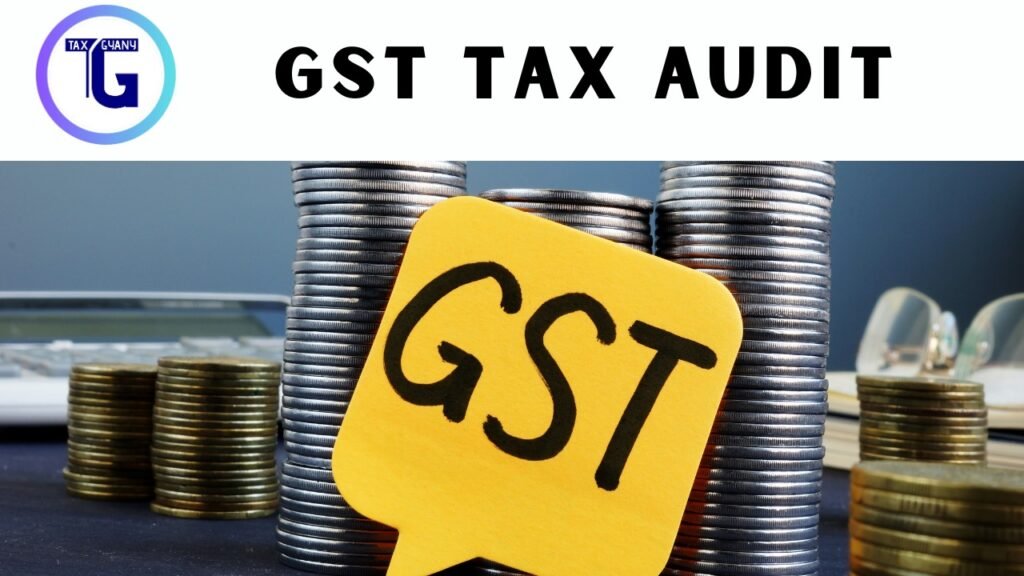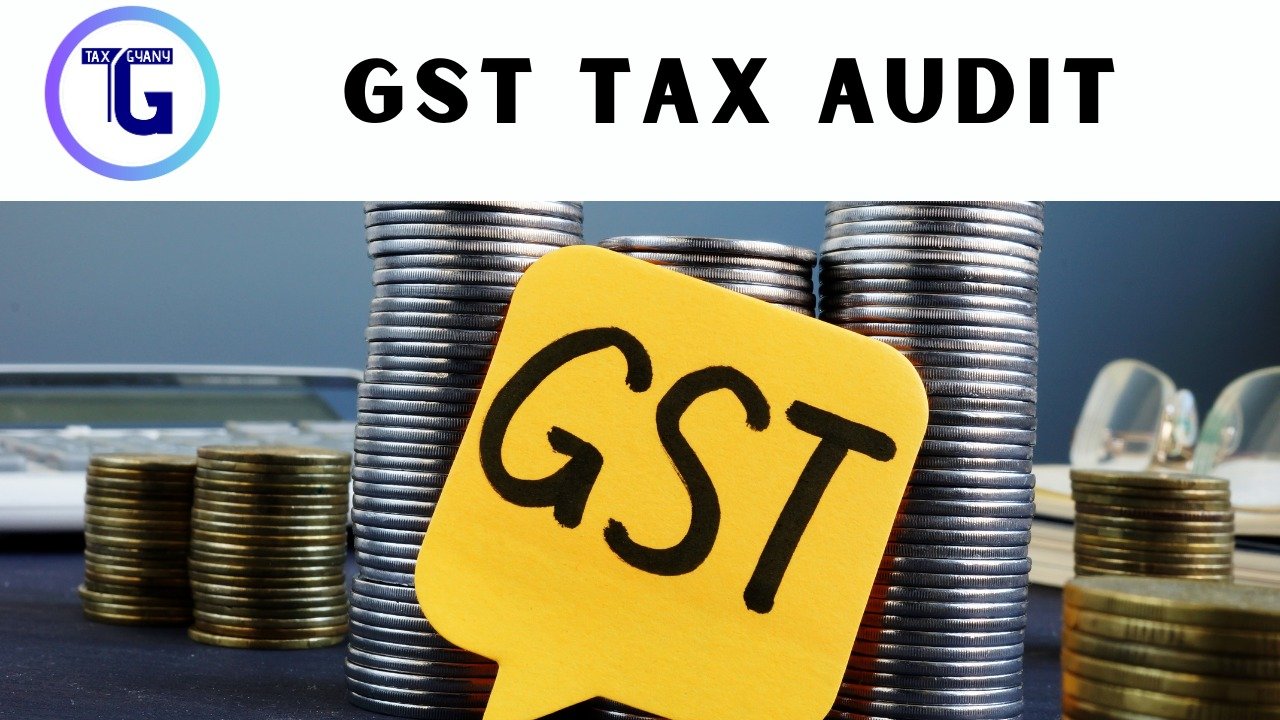Introduction to GSTR-9C:
GST Tax Audit Form GSTR-9C serves as a vital tool for taxpayers in reconciling their annual GST returns filed under GSTR-9 with the figures presented in their audited financial statements for the respective financial year.
GST Tax Audit This reconciliation statement holds particular significance for entities subjected to an annual account audit, ensuring accuracy and consistency in their financial reporting.GSTR-9C is a reconciliation statement that taxpayers with an annual aggregate turnover exceeding a specified threshold are required to file along with their annual GST return (GSTR-9).
What is GSTR-9C? : GST Tax Audit
- Best GST Tax Audit Simplifying GSTR-9C Filing Form GSTR-9C serves as a vital tool for taxpayers in reconciling GSTR-9C stands as a crucial annual audit form mandated for taxpayers with a turnover exceeding 5 crores in a specific financial year. In addition to the GSTR-9C audit form, taxpayers are required to complete a reconciliation statement and obtain certification from an auditor.
- This comprehensive process ensures accuracy and compliance with GST Tax Audit regulations. Best GST Tax Audit Simplifying GSTR-9C Filing It reconciles the turnover, tax paid, and input tax credit (ITC) availed and utilized as per the audited financial statements with the figures reported in GSTR-9.

Key Components of GSTR-9C:
- Certification by Auditor: The reconciliation statement is to be certified by a qualified chartered accountant or cost accountant after conducting a thorough audit of the taxpayer’s financial statements.
- Reconciliation of Turnover and Tax: GST Tax Audit It reconciles the turnover declared in the audited financial statements with the turnover declared in GSTR-9, along with the reconciliation of tax paid and ITC availed.
Eligibility and Due Date for GSTR-9C Filing:
- Who Should File GSTR-9C?
GST Tax Audit Taxpayers meeting the following criteria are required to file GSTR-9C:
- Entities with an annual aggregate turnover exceeding Rs. 5 crores during the financial year.
- Due Date for GSTR-9C Filing
The due date for filing GSTR-9C is typically December 31 of the subsequent financial year, along with the filing of GSTR-9.
| Annual Turnover | GSTR-9C (Reconciliation Statement) |
| Up to 2 Crore (Rs. 2 Cr) | N/A |
| More than 2 Cr – 5 Cr | Optional (Benefit Given) |
| More than 5 Cr | Mandatory |
Importance of GSTR-9C Filing
Filing GSTR-9C is essential for the following reasons:
- Compliance Requirement: It fulfils the statutory requirement under GST law for taxpayers with a turnover exceeding the specified threshold to undergo a tax audit and file a reconciliation statement.
- Accuracy and Transparency: It ensures the accuracy and transparency of financial statements filed by businesses, providing stakeholders with confidence in the integrity of the reported figures.
- Risk Mitigation: It helps identify discrepancies or errors in the GST returns and financial statements, allowing businesses to rectify them and mitigate the risk of penalties or legal consequences.
- How Many Types of GST Audits are There?
1.Regular Audit
- Overview: Best GST Tax Audit Simplifying GSTR-9C Filing The regular audit, also known as the routine audit, is conducted by tax authorities to examine the taxpayer’s GST returns, invoices, and financial records for compliance with GST laws and regulations.
- Purpose:The purpose of a regular audit is to verify the accuracy of GST returns, assess the correctness of input tax credits claimed, and identify any instances of non-compliance or tax evasion.
2. Special Audit
- Overview: A special audit is initiated by tax authorities when they deem it necessary to examine the taxpayer’s accounts more thoroughly due to complex transactions, discrepancies, or suspicions of tax evasion.
- Purpose:The purpose of a special audit is to delve deeper into the taxpayer’s financial records and transactions to ensure compliance with GST laws and regulations. It may involve a detailed examination of specific areas or aspects of the taxpayer’s business operations.
3. Departmental Audit
- Overview: A departmental audit is conducted by tax authorities themselves, either randomly or based on risk assessment criteria, to verify the accuracy and completeness of GST compliance by taxpayers.
- Purpose: The purpose of a departmental audit is to assess the taxpayer’s compliance with GST laws, identify any discrepancies or irregularities in their financial records, and take necessary enforcement actions if non-compliance is detected.
4. Audit by Chartered Accountant or Cost Accountant
- Overview: An audit by a Chartered Accountant (CA) or Cost Accountant (CMA) may be required under specific circumstances, such as when the taxpayer’s turnover exceeds certain thresholds or when requested by tax authorities.
- Purpose: The purpose of an audit by a CA or CMA is to independently examine the taxpayer’s financial records, verify the accuracy of GST returns, and provide certification or verification of compliance with GST laws and regulations.
Conclusion
- In conclusion, GSTR-9C filing plays a crucial role in GST compliance for taxpayers with an annual aggregate turnover exceeding the specified threshold. By understanding the eligibility criteria, due dates, and key components of GSTR-9C, businesses can ensure timely and accurate filing of their reconciliation statements, thereby fulfilling their tax obligations and promoting transparency in financial reporting.Each type of GST audit serves a unique purpose and is conducted to ensure compliance, transparency, and integrity in the GST regime. By undergoing these audits, taxpayers can demonstrate their adherence to GST laws and contribute to a fair and efficient tax system.
SOURCES: https://www.gst.gov.in/
FOR MORE INFORMATION: https://taxgyany.com/

